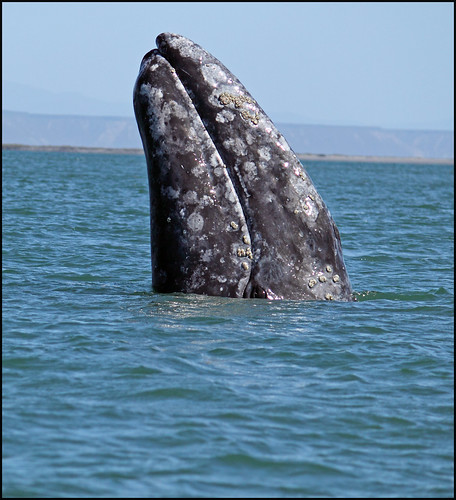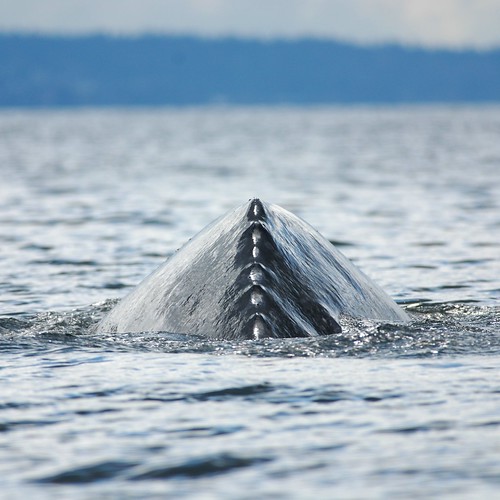The annual gray whale migration is under way with many sightings of gray whales entering Strait of Juan de Fuca, between the Olympic Peninsula, Washington and British Columbia, Canada. Whale watchers will have plenty of opportunities in March/April to see gray whales just off shore around sandy bottom beaches. Gray Whales are baleen whales that migrate between feeding and breeding grounds annually. They can weigh upwards of 35 tons and reach a length of 50 feet. Gray whales feed mainly on crustaceans by turning on their side (usually the right side resulting in blindness of the right eye in many mature whales) and scooping up soft sediments from the seafloor. Then the gray whale uses it large tongue to press up against its baleen or whale bone, pushing out the water leaving shrimp and crustaceans behind to swallow.
How to spot Gray Whales?
Because gray whales have a relatively flat profile in the water without a dorsal fin, having 6 to 12 crenulations "knuckels" instead, it can be more difficult to see them swimming in the deep waters of the puget sound.
The feeding grounds for gray whales are in shallow waters between 5 and 20 feet in depth. This brings them in fairly close to beaches around the puget sound such as Edmonds, Kingston, Hoods Canal, Bremerton, Mukilteo and Everett and around many of the San Juan Islands.
In calm wind conditions you may be able to spot a gray whale exhaling after its dive. They have two blowholes on top of their head, which creates a distinctive V-shaped blow out at the surface.
While scooping up sediment on their side often you can see the left flipper exposed and the fluke thrashing in the water propelling the whale forward.

 |
| Entering Bremerton Harbor |
 |
| Taking a look around. Spy Hopping |
 |
| feeding time |














0 comments:
Post a Comment